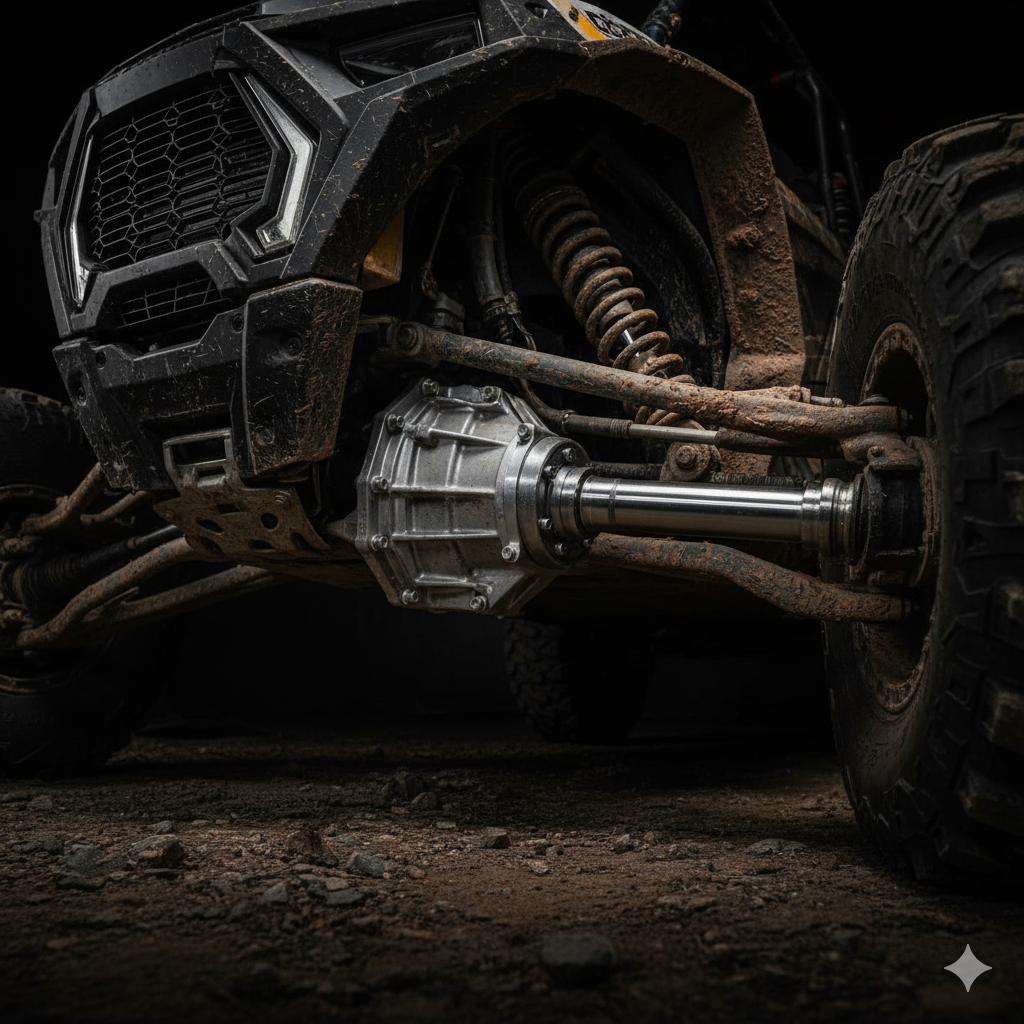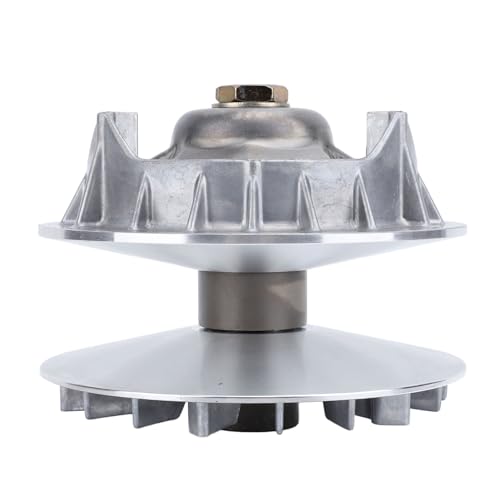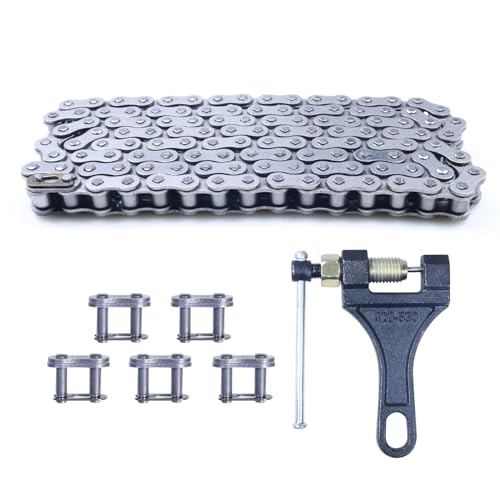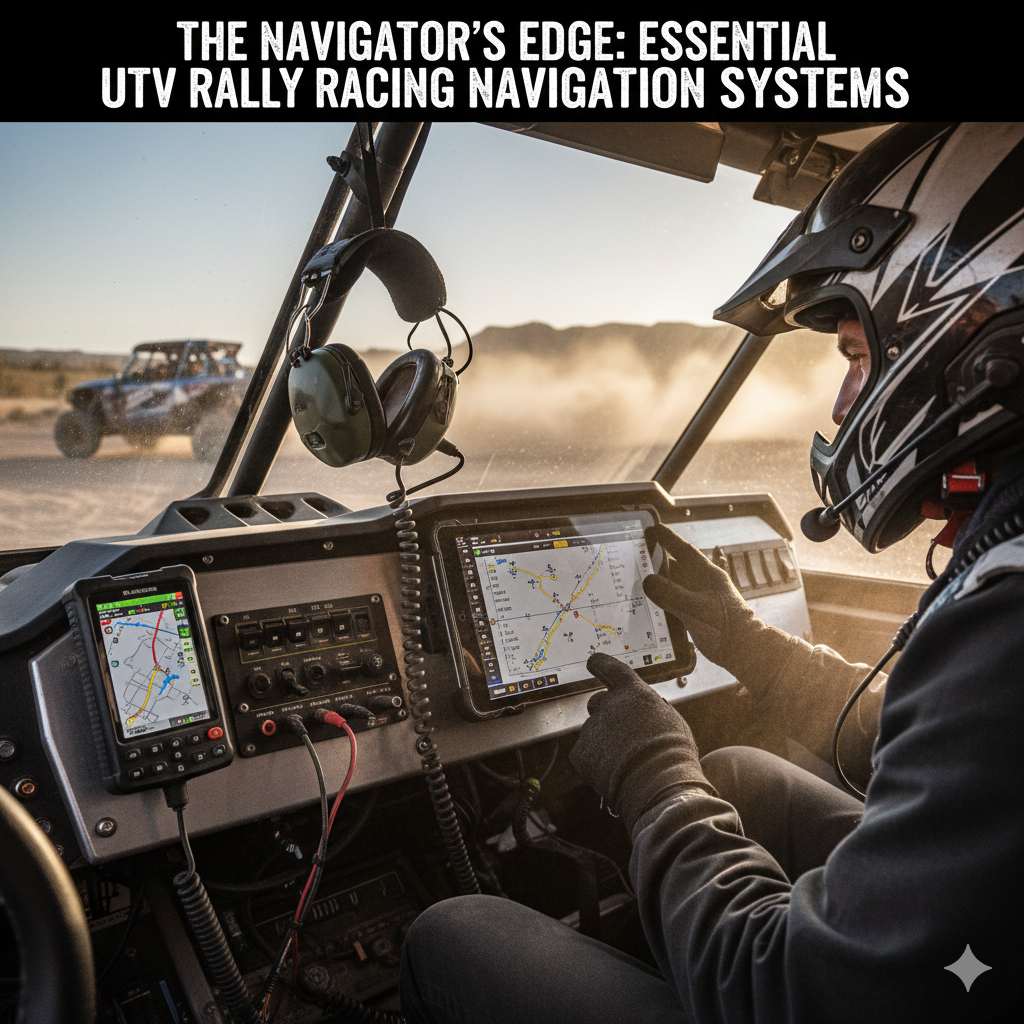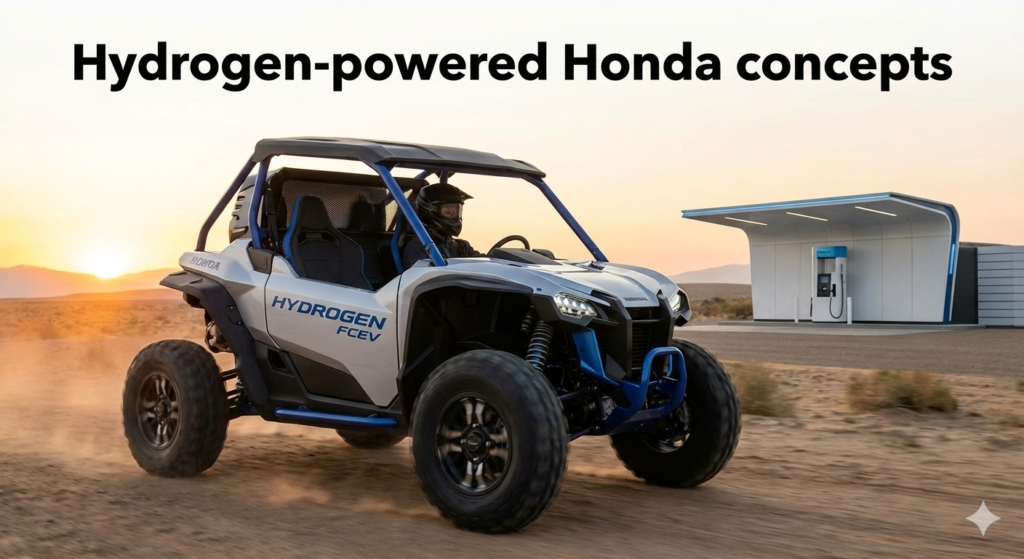I. Introduction: The Mandate for Drivetrain Strength
Original equipment manufacturer (OEM) drivetrains are carefully calibrated to handle the power, weight, and tire size they are delivered with.
The decision to modify a UTV or ATV—whether through horsepower enhancements like ECU tuning or mechanical changes such as lift kits and oversized tires—immediately re-calibrates the weakest component in the entire driveline.
Off-road vehicles must already contend with chronic mechanical wear and tear caused by the relentless jostling, jolting, and impacts of trail use.
Any significant performance upgrade dramatically accelerates this degradation.
The Compound Stress Multipliers
The single most consequential factor leading to rapid drivetrain failure is often the installation of large, heavy, oversized tires, typically paired with high-articulation lift kits.
The Mechanical Burden of Oversized Tires
While larger tires offer superior ground clearance, traction in challenging environments like mud or sand, and an aggressive aesthetic, they impose severe stresses that compound performance issues.
- Reduced Mechanical Advantage (The Lever Arm Effect): Increasing the tire diameter effectively lengthens the lever arm extending from the center of the axle to the ground. According to basic mechanics, increasing the length of this lever arm inherently reduces the mechanical advantage. This necessitates a significantly higher torque output from the engine and transmission to achieve the same forward force. The consequence is inherent torque loss unless corrected by gearing, forcing the powertrain to work dramatically harder.
- Increased Rotational Mass: Oversized tires are substantially heavier than their stock counterparts. This added rotational weight—which can be 30% or more per corner—exponentially strains all rotating components, including the wheel bearings, ball joints, axles, and CV joints. Every inch gained in tire size costs performance and durability.
The initial analysis of component stress reveals that the increase in rotational inertia, not just static torque demand, is a critical variable.
When excessive rotational mass is present, components like the CV joints and CVT belts struggle to manage the massive kinetic energy generated during rapid acceleration, deceleration, or violent shock loading (such as hitting a rock unexpectedly).
This extreme energy management translates directly into premature component overheating and failure.
To achieve reliability, strengthening components must account for both peak torque and the thermal and kinetic energy dissipation demands created by high rotational weight.
II. Critical Upgrade 1: Fortifying Axles and CV Joints
The axle assembly, comprising the shaft and the Constant Velocity (CV) joints, is typically the first mechanical casualty in a UTV that has been lifted or heavily modified for torque.
Causes of Stock Axle Failure
Stock axles fail for predictable reasons rooted in material limitation and geometric design compromise:
- Angle Overload and CV Joint Binding: Lift kits inherently subject axles to harsh operating angles. Once the axle exceeds the maximum angle for which its CV joint was designed, the internal components (bearings and cages) physically lock up, a phenomenon known as binding. Attempting to power through binding results in catastrophic internal explosion and failure of the joint carrier.
- Contamination and Material Limitation: The most common environmental killer of CV axles is a torn boot, which permits foreign debris, dirt, and water to enter the joint, rapidly destroying the internal bearings and causing premature wear. Furthermore, stock axles are constructed from conventional hardened steel, which often lacks the specific metallurgical composition required to endure the massive torsional stress imposed by modified engines and aggressive tire footprints.
The Metallurgy of Strength: Chromoly and 300M
High-performance axle solutions rely on advanced, heat-treated steel alloys engineered for superior strength and resilience.
- 4340 Chromoly Steel: This alloy, composed of nickel, chromium, and molybdenum, represents the industry standard for quality aftermarket axles. Chromium provides innate hardness and exceptional corrosion resistance, while molybdenum enhances the alloy’s overall toughness. When properly heat-treated, 4340 Chromoly axles are proven to be highly resistant to breakage and distortion and are commonly rated at least two times stronger than OEM counterparts.
- 300M Alloy: For the most demanding, extreme-duty applications, such as large lift kits and competitive racing, 300M alloy steel is considered the premium choice. This alloy features a flexible shaft designed specifically to absorb extreme shock forces, thereby protecting the delicate CV joints from the impact and torsional strain that would otherwise lead to failure.
Performance Axle Design for High Articulation
Component strength must be paired with geometric optimization, especially on lifted machines. Performance axles are engineered to maximize load capacity and angular deflection:
- Beefed-Up Diameter: Heavy-duty shafts and CV joints are substantially larger than factory equipment. For instance, many Rhino 2.0 axles feature a massive 4mm increase in shaft diameter compared to OEM, directly boosting torsional strength.
- High Articulation Angles: Upgraded CV joints are crucial for lifted applications, offering articulation capabilities typically rated at 40 degrees or more (with premium joints like RCV achieving up to 45 degrees of deflection). This increased articulation is often a more critical failure-prevention metric for lifted vehicles than sheer material strength alone, as it prevents geometric binding under maximum suspension travel.
- Thermal Management: These axles use synthetic, high-temperature grease and proprietary heat treatments to maintain integrity. The synthetic grease helps keep the larger CV joints cool, preventing the lubricant breakdown that occurs when harsh articulation angles create excessive heat.
An axle designated for “big lifts” must explicitly guarantee these increased articulation or deflection angles alongside high-strength materials, recognizing that a generic strong axle that retains OEM geometry will still fail due to geometric constraint when suspension components are pushed to the limit.
Axle Material and Performance Comparison
| Feature | Stock OEM | 4340 Chromoly (Rhino 2.0) | 300M Alloy (Rhino X300/RCV) |
|---|---|---|---|
| Typical Strength vs. OEM | 1x (Baseline) | \ge 2x Stronger | Highest Strength (Extreme Race) |
| Max CV Angle | Restricted Angle | 40°+ Articulation | Up to 45° Deflection |
| Diameter | Standard OEM | Massive 4mm Increase | Max Shaft and CV Size |
| Key Benefit | Cost/Fitment | High Durability & Longevity | Max Force Absorption (Flexible Shaft) |
III. Critical Upgrade 2: Optimizing the CVT/Clutch System
The Continuously Variable Transmission (CVT) is essential for smooth power delivery from the engine to the wheels, but it is a high-friction system extremely sensitive to load, heat, and rotational mass.
Heat: The Silent Killer of CVT Belts
Overheating is the number one cause of premature belt failure, power loss, and rapid degradation.
Heat generation often results from aggressive riding, towing heavy loads, or, crucially, using High gear when under significant load (such as deep mud or hill climbing).
The critical mechanical threshold for failure prevention is the thermal limit:
belts operating consistently above 200°F will fail prematurely.
Proactive thermal management is non-negotiable for modified UTVs.
- High-Performance Belt Construction: Stock rubber belts must be replaced with heavy-duty, reinforced alternatives. Belts utilizing advanced materials, specifically carbon tensile cords (such as Gates G-Force C12 Carbon belts), provide minimal stretch and extraordinary strength, bonded to aramid fiber-loaded rubber for superior heat resistance and increased side-load durability.
- Active Thermal Management: Cooling strategies must be employed, including cleaning clutch vents after every dusty ride, installing high-flow foam inserts, and utilizing ram air tubes or scoops to actively draw compressed, cooler ambient air into the clutch housing. For critical assessment, carrying an IR temperature gun to monitor the belt surface is highly recommended; pulling over if the temperature exceeds 200°F prevents catastrophic failure.
CVT Clutch Tuning: Calibrating for Load and Power
A performance clutch kit is a tailored enhancement designed to maximize the vehicle’s potential by ensuring smoother engagement, optimal power transfer, and keeping the engine consistently within its peak power band, typically 7700–8000 RPM for modern sport UTVs.
Primary Clutch Adjustments
The primary clutch (the drive clutch off the motor) controls the engagement and the sustained peak RPM. Tuning is achieved primarily through adjusting the flyweights and springs:
- Peak RPM Control: Adding weight to the flyweights in the primary clutch will decrease the sustained peak RPM; conversely, removing weight will increase the peak RPM.
- Acceleration and Backshift Control: The location of the weight matters. Weight placed toward the heel of the flyweight affects low-to-mid acceleration (too much causes a sluggish takeoff), while weight placed at the tip affects high-speed RPM and backshift characteristics (too much can cause an undesirable over-rev dip after acceleration spike).
Secondary Clutch Adjustments
The secondary clutch (the driven clutch connected to the drivetrain) governs the speed of the ratio shift and backshift speed. This is adjusted via the helix angle and spring tension.
Increasing the spring twist results in a higher operating RPM and a faster backshift, vital for quickly adapting the gear ratio when exiting corners or encountering sudden resistance.
Adjusting for Environment and Oversized Tires
Clutch tuning must dynamically account for external variables.
Oversized tires and riding in sand dunes impose significant additional resistance.
This condition requires compensation in the tuning, often modeled as an 8% reduction from the target calibration horsepower to account for the increased load.
Similarly, riding at high altitude, where thinner air reduces available horsepower, demands a larger adjustment, sometimes up to a 15% reduction in target calibration horsepower.
For the enthusiast planning to undertake this frequent calibration,
it must be recognized that the CVT system requires highly specific, dedicated tools.
Accurate disassembly, reassembly, and alignment are impossible without vehicle-specific primary clutch pullers, alignment tools, and C-clamps.
Investing in these high-quality tools (e.g., EPI or SuperATV models) is a necessary investment to ensure the calibration is precise and prevents severe damage to the clutch components during maintenance.
Clutch Tuning Adjustment Guide (Primary Clutch Focus)
| Symptom/Goal | Cause | Adjustment (Primary Clutch) | Effect |
|---|---|---|---|
| Over-revving at WOT | Too little total weight | Add Weight | Lowers Peak RPM, Increases Belt Squeeze |
| Bogging at WOT | Too much total weight | Remove Weight | Raises Peak RPM, Increases Throttle Response |
| Sluggish Takeoff | Too much Heel Weight | Remove Heel Weight / Move to Tip | Faster Low/Mid Acceleration |
| RPM Spike then Dip | Too much Tip Weight | Shift Weight back to Heel | More Stable RPM Consistency at Full Throttle |
IV. Critical Upgrade 3: Differential and Gearbox Reinforcement
The differential is the central component responsible for distributing engine torque to the axles.
Under high load, this unit is subject to massive twisting forces, making both the external housing and internal components vulnerable to failure.
Housing and Mounting Integrity
Stock aluminum differential housings are prone to flexing under extreme torque, which leads to bearing misalignment and eventual catastrophic internal failure.
- Billet Aluminum Construction: Upgrading to a heavy-duty differential housing is foundational. While thick-walled cast aluminum housings offer increased strength, 6061 Billet Aluminum housings provide a significant structural advantage. Billet material offers superior structural density and strength over cast options, often coupled with enhanced aesthetics.
- Reinforced Mounting Threads: A common point of structural degradation is the mounting threads connecting the differential to the chassis. Aggressive riding, high torque events, and vibrations cause the stock mounting holes to fatigue and wallow out. High-quality aftermarket housings utilize steel helical inserts in the mounting threads, which prevent this failure and ensure the differential remains rigidly fixed despite severe terrain abuse.
Internal Hardening and Locking Devices
Internal component reinforcement is necessary to handle the load delivered to the axles.
This is particularly crucial in models known for differential fragility, such as certain Polaris RZR platforms.
- Upgraded Sprague Cage and Internals: Failure often originates in the fragility of OEM components like the Sprague cage and internal gears. A typical high-performance differential rebuild package replaces these components with durable, hardened materials, such as a 6-Tooth Billet Sprague cage and 4130 steel cage plates. Furthermore, ensuring the longevity and proper alignment of the ring and pinion gears requires the installation of custom shims to correctly set the lash (gear mesh clearance), minimizing wear and noise under load.
- Spools vs. Selectable Lockers: Both locking devices are designed to ensure 100% torque delivery to both wheels, overriding the standard differential action when traction is paramount.
- Full Spools: A spool permanently locks the left and right axle shafts together. This provides maximum acceleration potential and strength, making it ideal for dedicated drag racing or extreme off-road rigs where straight-line traction is the sole focus. However, this configuration severely compromises handling in mixed environments; the rear end “fights” turning corners, leading to tire hopping, skipping, and accelerated, uneven tire wear.
- Selectable Locking Differentials: These devices offer the best balance between performance and versatility. They allow the driver to engage the 100% lockup mode for unmatched traction in mud, snow, or rocky terrain, but they can be disengaged for normal driving, retaining proper handling benefits of independent wheel rotation during turning. This adaptability makes them the preferred choice for a broader range of serious off-road applications.
For high-level racing and competition, the need to reduce rotational mass is paramount.
While strength is achiev using 4140 steel forgings, high-performance manufacturers offer spools made from rugged 7075 alloy aluminum forgings.
These lightweight spools can weigh less than half of their steel counterparts,
providing a distinct performance edge by minimizing the power required to rotate the mass,
demonstrating a meticulous engineering focus beyond mere material strength.
V. Conclusion: Riding Confidently
The decision to install UTV drivetrain strengthening modifications is not an enhancement—it is an essential preventative measure.
Reliability in a heavily modifie off-road vehicle is achiev only when the durability of the driveline components meets or
exceeds the mechanical demands imposed by engine performance, oversized tires, and extreme suspension geometry.
Failure to establish this balance results in predictable and costly mechanical breakdowns.
Professional UTV builders prioritize a layered approach to durability:
- Axle and Geometry Focus: Utilizing geometrically optimized, heat-treated 4340 Chromoly or 300M axles is necessary to handle massive torque and, critically, to prevent CV joint binding on lifted rigs through high articulation angles (40°+).
- Structural Integrity: Replacing stock differential housings with structurally superior 6061 Billet Aluminum and reinforcing the mounting points with steel helical inserts ensures the integrity of the critical gearbox components under massive strain.
- Thermal Management: The CVT system’s longevity depends entirely on mitigating heat. This involves upgrading to high-strength, carbon-cord belts and implementing active cooling strategies, guided by diligent monitoring (e.g., using an IR thermometer to keep belt temperatures below the 200°F threshold). Furthermore, utilizing low gear when navigating high-resistance terrain (mud, heavy climb) is a crucial operational technique that prevents thermal overload and slippage, safeguarding the investment in high-performance components.
By investing strategically in these reinforced components and maintaining a meticulously tuned CVT system,
the UTV shifts its mechanical stress threshold significantly upward,
granting the operator the confidence to push the machine to its absolute limit without the constant threat of catastrophic compromise.
- Fitment: Primary clutch is replacement for Hisun HS 800 1000 UTV’s Including, for Spire, for Massimo, for Strike, for Su…
- OE Numbers: 21300‑010‑1000, 324800001, 21300 F68 0000 are the reference part numbers. Please double check the part numbe…
- Powerful Performance: Primary clutch cvt sheave achieves instant clutch through precise rotation, making the driving mor…
- Fits Vehicles: 428 chain 122 links for 125cc 150cc 200cc motorcycle mini pit dirt bike go karts cart mini trail bike chi…
- Meterial: This 428 122 links chain is made of excellent metal material .This is a great replacement motorcycle chain. Mo…
- Feature: 428 motorcycle chain, the 122 links include 61 internal links and 61 external links. Master link can be added o…

